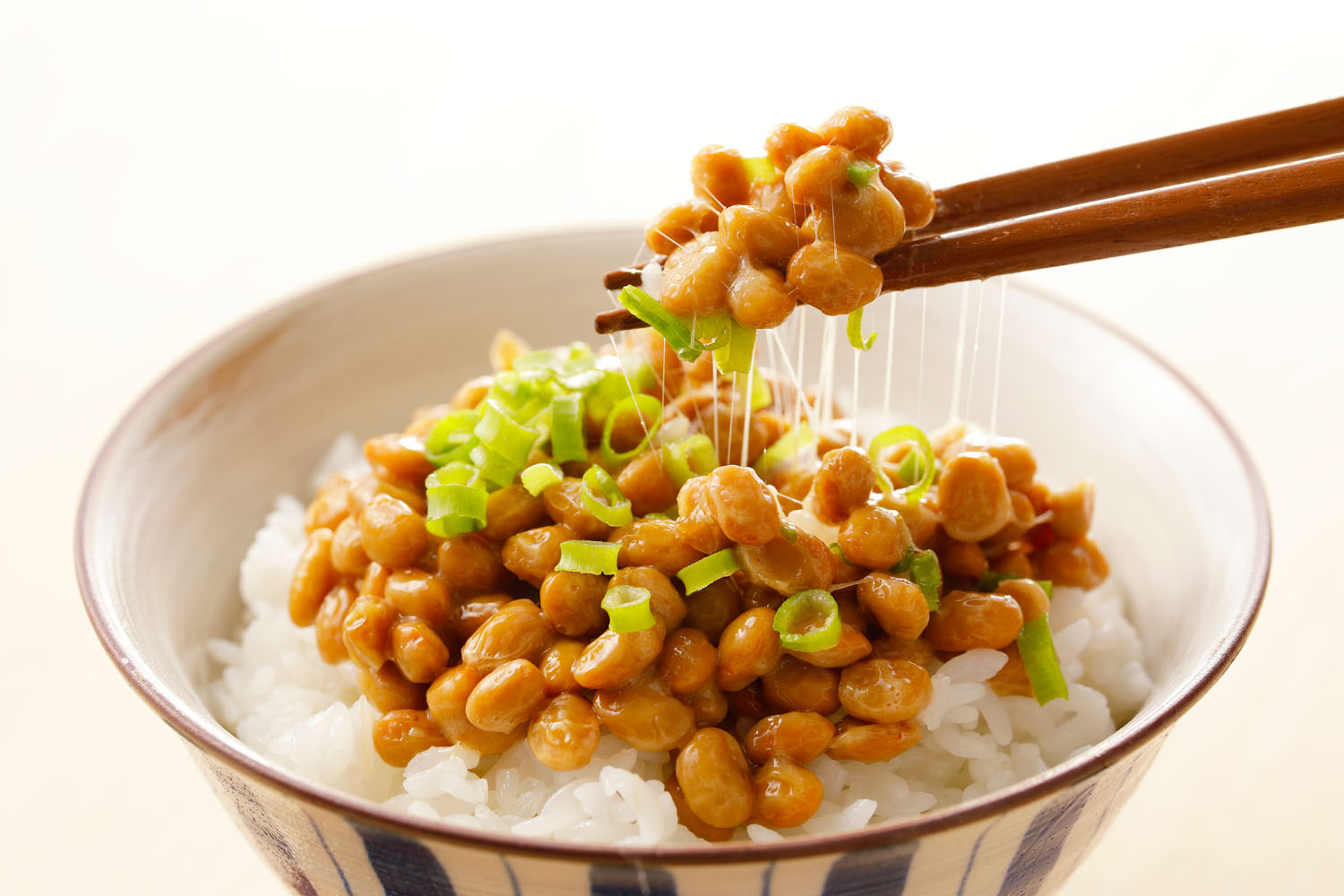

NATTO – A DISH FOR GOURMETS
What is natto?
Natto is a product obtained from soya, which has been subjected to natural fermentation using the right bacteria. This fermentation allows soybeans to be better absorbed by the body, better digested and also makes it possible for the body to increase the absorption of nutrients. Natto owes its name to nattokinase, which liquefies blood and dissolves clots, lowers cholesterol levels and lowers high blood pressure. Natto also contains vitamin K2mk7, which supports the treatment of osteoporosis, atherosclerosis, heart disease, diabetes, multiple sclerosis, kidney stones and, more importantly, delays the aging of the body. Moreover, fermented soya is full of soy isoflavones and probiotics. Just two teaspoons of natto a day will do wonders for your health.
The preparation of natto requires specialised fermentation equipment and dried rice stalks, which are colonised by fungi. In the past, soybeans were stored in tight bundles of rice grass, which was a very good environment for the growth of Bacillus Natto bacteria, facilitating the production of the aforementioned nattokinase. Legend has it that the way to produce natto was developed 1,000 years ago, when a warrior, Minamoto Yoshiie, tried soybeans that had fermented after being mistakenly left on straw.
You either love or hate natto
Natto, which is consumed Japanese on a mass scale, has been their staple food for over 1000 years. It is often found in traditional breakfast, spread on a toast with butter. You can often hear that the Japanese owe their longevity to natto. The lifespan of an average American is four years shorter than that of a Japanese, perhaps because natto is ranked first in the American ranking of the most disgusting dishes.
For foreign tourists natto can constitute quite a culinary challenge, since its appearance is by no means mouth-watering. You will be served with brown soybeans covered with a thick, jelly-like mucus, gooey like melted cheese…. Its stretchy texture is due to the proteins and carbohydrates found in soya, which decompose during the fermentation process and form sticky strands that can stretch up to 6 metres in length. The smell of natto is compared to that of miso. The taste is slightly bitter, salty and foul.
What should accompany natto?
Natto is usually served as an appetizer. It may be accompanied by mustard, chopped chives or seaweed. It may also be served as a separate dish with rice and soy sauce. While eating natto you should drink a lot – not during the meal, but at least one hour after and before the meal. It is best to drink mineral water with a pinch of salt or glucose. Vitamin K, which natto contains, is well absorbed with fats, so it is recommended to serve the dish with a poached egg, with a runny yolk. Before eating, fermented soybeans must be stirred thoroughly in a bowl to make them creamy. Remember not to heat up natto, as it will lose its valuable nutrients.
Ways to eat natto
If the health benefits of natto have persuaded you to try this dish, but its texture and smell dissuade you from doing so – take heart! Soybeans are also available in Poland in the form of dried crunchy balls, which lack the characteristic smell. You can add them to muesli, yoghurt, soups and salads. You can find dried natto in health food stores, and those which offer oriental and organic products. When buying natto, you should check whether it comes from Japan. Only this country has introduced a total ban on the genetic modification of foods.
Remember, however, that natto has the best nutritional properties immediately after it is prepared, so it is best to go to Japan and eat the original product there! Then you will be able to tell your friends that you were brave enough to try one of the most controversial dishes in the world! Who knows, maybe the dish will be to your liking and you will regularly return to the Land of the Rising Sun.























